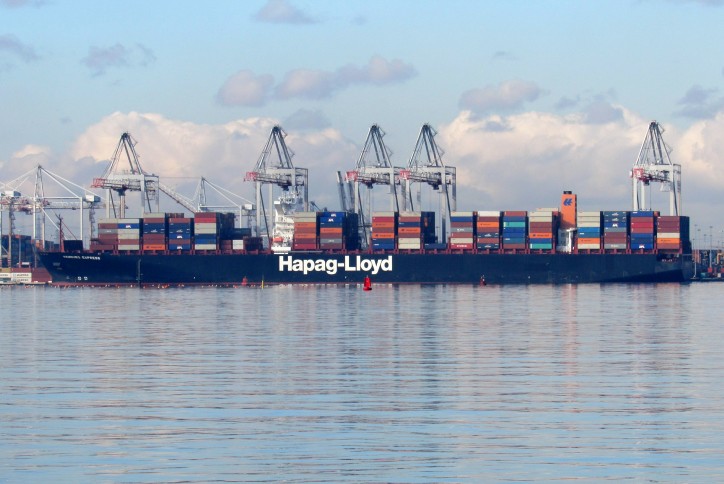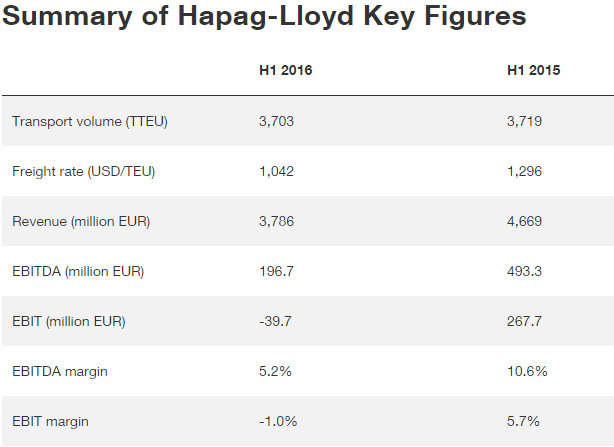Transport volume stable / Rates decline further / Transport expenses significantly reduced thanks to synergies and efficiency programs / Focus in second half on further cost savings, revenue recovery and preparations for the merger with UASC
Subdued economic growth in many parts of the world, persistently tough competition in the liner shipping industry and further declines in freight rates have marked the first half of the 2016 business year. While transport volume remained stable in the first six months at 3.7 million TEU (-0.4 % compared to the prior year period), the average freight rate fell by USD 254 year on year to 1,042 USD/TEU, or almost 20 percent. Revenue reached EUR 3.8 billion in the first half of the year (prior year period: EUR 4.7 billion).

Container ship Hamburg Express - Image courtesy: Les Rickman
It was possible to reduce year on year transport expenses by approximately EUR 600 million, or almost 16 percent. Aside from lower bunker prices and consumption than in the previous year, this development was also attributable to synergies realized as a result of the integration of the container business of CSAV and ongoing cost savings and efficiency programs. Bunker prices started to go up in the second quarter of 2016 while freight rates remained at a low level. This led to an additional negative impact on earnings.
In the first half of the current business year, Hapag-Lloyd achieved an EBITDA of EUR 196.7 million (prior year period: EUR 493.3 million) and an operating result (EBIT) of EUR -39.7 million (prior year period: EUR 267.7 million). The Group net result stood at EUR -142.1 million (prior year period EUR 157.2 million).
“The first-half result is disappointing,” said Rolf Habben Jansen, CEO of Hapag-Lloyd. “Our cost saving measures and efficiency programs are on track and the synergies from the merger with CSAV are being realized on schedule. But this isn’t enough to completely compensate for the significant drop in the average freight rate. Even though freight rates have finally gone back up towards the peak season in various trades this rebound is coming later than anticipated and more is needed going forward.”
“In the second half of the year, our main focus will be to further improve our cost base and to do whatever we can to get freight rates back to a more sustainable level,” Habben Jansen added. “In this difficult competitive environment, it is very important to complete the transaction with UASC as quickly as possible and to start the integration of UASC immediately after the completion of all pre-closing conditions. The integration will bring us annual net synergies of at least USD 400 million, some of which should already take effect next year.”
During the period under review, Hapag-Lloyd invested EUR 178.8 million in vessels. With an equity ratio of 44.4 percent and liquidity reserves of EUR 774.9 million (both as of 30.6.2016), the company is well positioned compared to its international competitors.

Source: Hapag-Lloyd